But what is a “supercar”? How would you define it? Is it, in fact, even possible to come up with a definition that all car lovers will agree with? I’m not sure, but let me give you my own boyhood definition of “supercar” and how I arrived at the definition.
First off, some background. I grew up in Canada, and when I was young there were no supercars in my neighbourhood. We had only American sedans, wagons, and vans. These are not supercars, obviously. There was a smattering of sports cars: older British roadsters like a Triumph Spitfire or an MG Midget, cars that rarely started and kind of just sat there looking a bit grimier month by month (or year by year if they lasted that long). The Canadian winter slaughtered those cars. There were a few Italian sports cars, a Fiat 124 Spider with its fine balance lines, and a Fiat 850 spider, looking so tiny between the fat sedans parked along the side of the street. Those cars never started much, either. Their owners washed them a few times in the summer and then the Canadian winter killed them off, too. But, as those old European sports cars were towed away from the curbside, I did take away one thing myself: the idea that a sports car was good looking and handled well. Maybe it wasn’t fast, but it was cool.
We also had muscle cars; America’s prime contribution to motoring joy. Cars such as the Ford Mustang (like my Dad’s 1967 289ci V8) or the Chevrolet Camaro. Those cars did start, and when they started, everyone on the street knew it: a deep-throated roar followed by that V8 rumble-bumble at idle. Muscle cars were fast (in a straight line) and the winter did not kill them off; oh no, no. The owners put boring-looking snow tires on in the winter and then off they drove to work while the British and Italian sports cars slept buried under a blanket of snow. Yes! Those muscle cars were straight line rockets (the engine in my Olds Cutlass was even called the “Rocket”), 0 to 60 miles per hour was everything and we didn’t care much about handling. And we didn’t get it, either, muscle car handling was poor to say the least and verging on deadly in some cases.
The Definition
So for the little, car-loving boy me, it was muscle cars that had the power (and maybe looks) and sports cars that had the handling (and looks for sure). My boyhood fantasy definition of the supercar was therefore natural: A car that combined the power and acceleration of a muscle car with the handling and looks of a sports car.
The Car
And then, one day in Toronto, driving down the Don Valley Parkway with my Dad, I actually saw my fantasy come real: “Look, David, look! Left side! Coming up fast.” But I was already gaping, bug-eyed because that sound, that half high howl, half bass roar of the V12 had already got my head up and eyes out the window. A Lamborghini Countach jetted past us, of which I mostly saw this view:
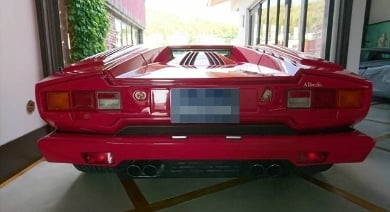
the view most of us get of a Countach on the road.
My heart went with it while my Dad just kept repeating “Look at that! Look at that!”
Sharpening the Definition
Later I would come to add a few more elements to my definition of “supercar,” elements like good braking, so that you could bring the rocket to a quick, stable stop without using something so final as a wall or bridge abutment. I also came to think that a true supercar should basically have an element of “extreme” in it. Extreme looks or extreme acceleration, or extreme top speed; preferably all three.
Now our work of sourcing and exporting good used cars from Japan to the USA, to Canada, to Britain, Australia, Europe and other countries means that we deal, not in one type of car only, but in variety itself, and this is one of the fun aspects of our job: from mini trucks to supercars and everything in between is truly a description of what we make available for people who want to do a self import from Japan. Getting to know all these different types of Japanese and European vehicles is a challenge and a delight, and the top, for me, is finding and exporting the sports and performance machinery: from Japanese Kei sports cars (your Subaru Vivio RX-Rs and your Suzuki Alto Works) and Japanese supercars (your R32 and R34 Skylines and your Impreza STi and your Mitsubishi Evos), all the way up to the European supercars (your Ferraris, your Maseratis, your Lotuses, your AMGs and your Porsches, and, yes!, your Lamborghini Countachs).
“Our Supercars”
(Some Supercars from Japan Car Direct)
I said in my previous post on European Supercars from Japan that we would look in more detail at some of the cars that we’ve exported. Let’s do that now, starting with the “flat out” supercars that I showed you before, the Ferrari 512 and the Ferrari Testarossa.
The Testarossa that we exported from Japan here has got to be the quintessential supercar, along with the Countach, of course (O.K., O.K., I know, I know, I’m always on about the Countach, but cut me a little slack, guys, some boyhood dreams never die), and it was a feather in our caps here at Japan Car Direct.

It’s a 1991 and so now (mid 2020) I’d call it not only a full on supercar (phenomenal handling and 0-60mph in, what, 5 seconds and small change?), but also a classic. The car had 26,700km (16,600 miles) on him when we got him. He was very clean and with the leather all up to spec. Now this car is one that we sourced at a used car auction here in Japan and, without revealing dollar figures, I can say that the price was good. Not untypical, since auction deals can be (very pleasantly) surprising. It all depends on the car and the day. That car was clean! More pics here.
The other Ferrari, certainly also a classic supercar now (how does 0-60mph in under five seconds strike you?) and Ferrari Red, of course, that I mentioned in Part 1 was the 512.

This car had more miles on him than the Testarossa (47,500km, about 29,500 miles) but he was just as clean, and was also left hand drive (LHD). Interestingly enough, because supercar owners don’t often modify their chariots of fire, this 512 had had aftermarket Recaro seats installed, and, although we took our pics on a rainy day and not in the blazing sun ripping down the autostrada as the car really deserves, there are some good shots here on our main Japan Car Direct website.
O.K., so now I’ve talked about two Ferraris, can I talk about Lamborghinis now? Yes, I can. I’ve done my Ferrari duty.
This:
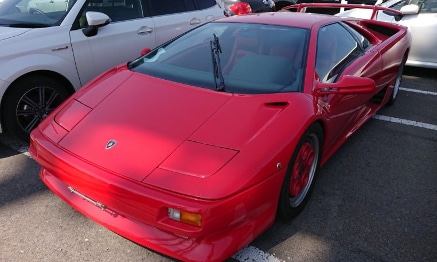
is a Lamborghini Diablo, the follow on car to the Countach (alright, I won’t mention Countach again for the rest of this post….maybe I won’t). It was quicker, with an even bigger V12 engine, and was even more wicked looking. Clearly more comfortable and civilized (at least on the inside, compared to the Countach’s rather minimalist and slightly Millennium Falcon looking interior),
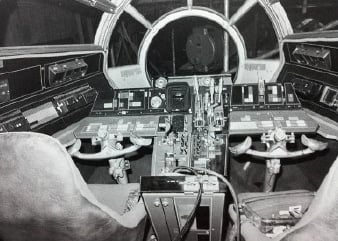
the Diablo is still clearly an utterly uncompromisingly SUPERCAR! Zero to sixty miles per hour in less than four seconds. Lordy love a duck! The car we sourced and exported was a 1992 with about 35,000km (28,000 miles) on him. He’d perhaps been driven a bit harder than the Testarossa and the 512 and had a slight scuff on one fender, and the driver’s seat showed just a touch more wear. But he was also clearly a good find and was a good price. Do have a look at the pics on our site here.
More “Civilized” Supercars
Now not every European Supercar that we export from Japan is one of these classic, hardnosed types: the two-seat, mid-engine, extreme-looks type that my boyhood definition of “supercar” covers. There are some rather more executive level machines that are in the supercar class due to speed, power, handling, braking, and looks; and they have exotic, magical names like “Maserati.” Like this Maserati Quattroporte that it was our privilege to find and export.

Zero to sixty miles per hour comes up as quick as with the Testarossa and yet you have here a luxury executive cruiser with plush interior and full rear seats. A very different take on the supercar concept as far as body interior and exterior go, the 2006 Quattroporte that we exported from Japan was an extremely clean car, mint condition, actually, with only 44,400km (27,600 miles) on him. Seriously nice car. We sourced him in Tokyo. Have a look at him here.
Another Maserati that we exported from Japan, even more beautiful to my mind than the Quattroporte Executive, was this 2002 Assetto Corsa.
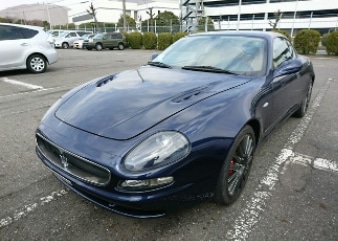
A touch quicker than the Quattroporte, too, by the way, just a touch, and although he came to us with more miles on him, at 78,500km (48,800 miles), he was absolutely in lovely, super clean condition inside and out. A loved car for sure. Have a quick read of our write up on this car here and see what a “package” this supercar is.
O.K. Basta con questi italiani! Enough of these Italians! How about some German supercar iron?
You got it…in our next post on European Supercars from Japan. Wait, Wait…….
Cruel, aren’t I? But I’m a soft-hearted guy in the end and so, before I wrap up this post I’ll, let you have a look at this.
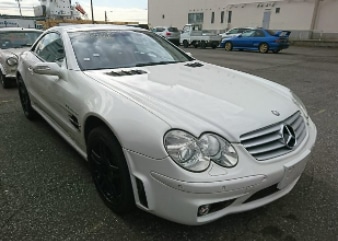
A 2004 Mercedes-Benz SL55 AMG. What a stunner! Looks and power (0-60 mph in 4.6, anyone?), quality and refinement. This used AMG supercar had 89,000km (55,300 miles) when we exported him and, even with those miles on the clock, very little wear; indeed: a bit of finger wear on the leather surround at the dash-mounted headlight control, and a bit of wear on the key fob. (I suspect the first owner kept that key fob in his pocket at all times just to remind himself of how wonderful it is to have a supercar like the SL55 AMG. I do that with my car keys, too, when I really love the car.) Check out our pics here.
And, now, I will pack it in for this post, because I want to tell you next about the other German supercars, and especially the Porches, classic and more modern, that we have been exporting steadily from Japan to the USA, Canada, Britain, and the EU. We’ve got a lot to show you.
PS: Yeah, I know that I mentioned Countach again after I said earlier that I wouldn’t, but what could I do?



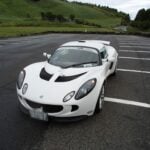
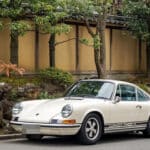




Leave your questions and comments, we look forward to replying!